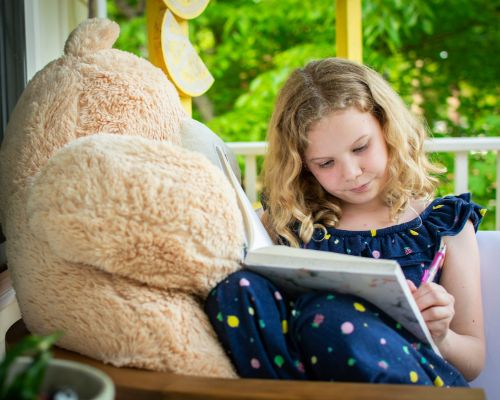Learn how to empower your children to develop healthier internal dialogues.
In today’s fast-paced world, parents are no strangers to the constant stream of thoughts running through our minds. These thoughts can feel overwhelming but understanding how to manage internal dialogue mindfully can lead to more positive outcomes for parents and children. Mindfulness, the practice of being present and aware of our thoughts without judgment, offers an opportunity to learn to manage our internal ruminations by being aware and observant of our thoughts. Psychologist, Ethan Kross, offers valuable insights into the nature of internal dialogue, its impact on our lives and learning to manage them in his book, “Chatter.” Instead of getting consumed by chatter, we can learn how to manage it with mindfulness.
At its core, chatter refers to the constant stream of thoughts that run through our minds — an internal dialogue that can shape our emotions and behaviors. For children, this chatter can manifest as self-doubt, anxiety or even creativity. Kross emphasizes the need to recognize when our internal voice becomes negative, as it can significantly impact mental health, relationships and overall well-being as it can feed our anxieties and amplify worries.
As parents, your influence on your children’s internal dialogue is significant. Children often model their self-talk based on the feedback they receive from their parents and the environment they create at home. By understanding the principles outlined in “Chatter,” parents can cultivate a supportive atmosphere that encourages positive internal conversations. Many of these tools have been discussed in previous articles here, but now I am offering them in a different context. When we are mindful of our chatter, we can begin to recognize them and redefine them.
“Chatter” offers a profound exploration of the inner dialogue that shapes our experiences. The lessons in this book provide practical strategies for parents to support their children’s mental and emotional well-being as well as their own. Parents can use and implement the following strategies from “Chatter” to manage their internal dialogue and our children:
- Model Positive Self-Talk: Demonstrate healthy self-talk in your own life. Share how you cope with negative thoughts and transform them into positive affirmations with your child. This will set an example for your children on how to handle their internal chatter. When my child has negative thoughts, I ask her if her friend had these thoughts how would she help them get through them. Why are we kinder to others than we are to ourselves?
- Encourage Mindfulness: Teach your children mindfulness practices, such as deep breathing or meditation. These techniques can help them become aware of their thoughts without getting overwhelmed by them, fostering a healthier relationship with their internal dialogue. Sometimes, when my child is anxious, I ask her where she feels the anxiety in her body. Can you breathe into it? What is it saying? Is it true?
- Promote Journaling: Encourage your kids to keep a journal where they can express their thoughts and feelings. Writing can be a powerful tool to help them process their internal chatter and gain clarity on their emotions. Free-form writing for 10-20 minutes is an excellent practice that will amaze you with what comes up.
- Open Communication: Create a home environment where your children feel comfortable discussing their thoughts and feelings. Encourage them to share their worries and fears, validate their experiences and help them reframe negative thoughts. Help your children learn to challenge their negative thoughts. For instance, if they express doubt about their abilities, guide them to identify evidence that counters that negativity, fostering a more balanced perspective.
- Recognize External Influences: Understand the external factors that contribute to your child’s internal dialogue. Limit their exposure to negative influences from social media and peer pressure, while promoting positive interactions and experiences. By being aware of external influences, we can create strategies to address them and how to respond in situations. In 2025, my goal is to reduce the amount of news I watch and instead dedicate that time to spending quality moments with my family.
Anthony Cupo is a trained mindfulness facilitator (TMF) from the UCLA Semel Institute for Neuroscience and Human Behavior. He is a co-owner of Stepping Forward Counseling Center, LLC, and has been meditating for over 30 years.











Leave a Reply